Where: Sicilia - Siracusa, Noto & Catania, Italy
When: 26th - 29th March 2017
We arrived in Siracusa in the afternoon and after we were greeted by Marco, whom I'll tell you about later, we went out for a walk.
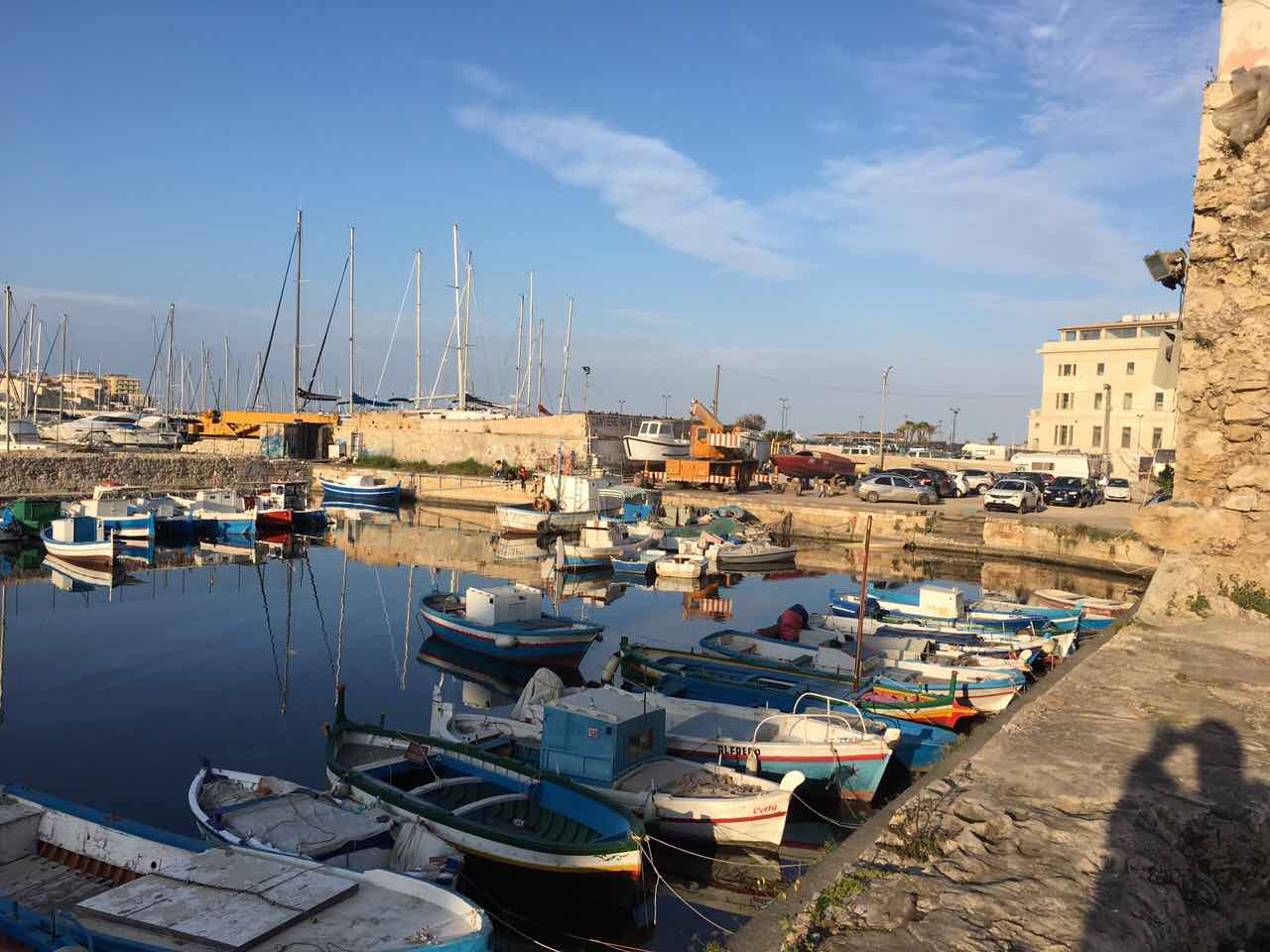
|
| Siracusa |
We went straight to the island of Ortygia - Siracusa's historical center, where we found the Fountain of Artemis (Diana) in Piazza Archimedes. The piazza was dedicated to Archimedes (yep, the one with the principle about floating bodies), who was born in Siracusa.
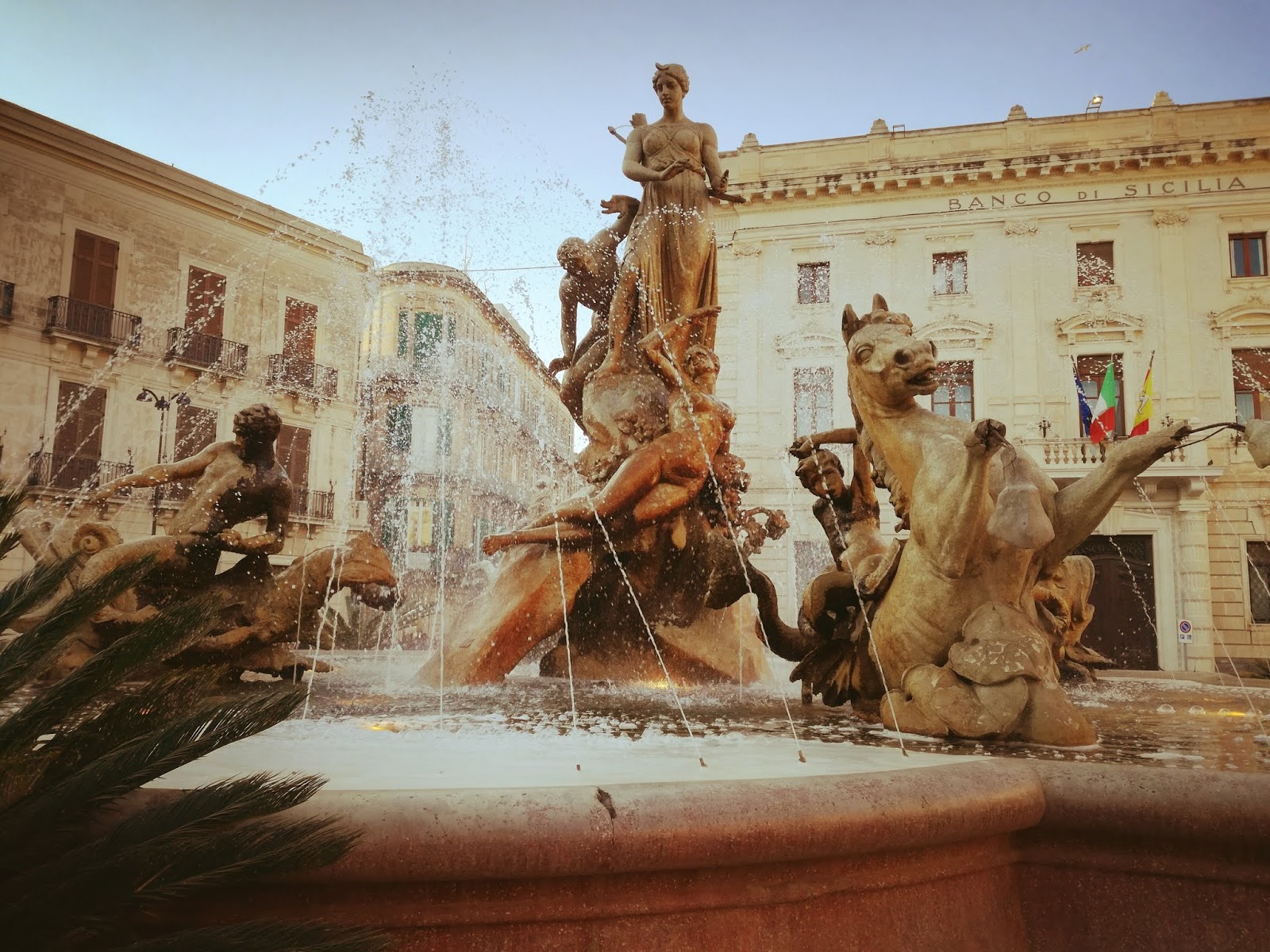
|
| Fountain of Artemis (Diana) in Piazza Archimedes |
With its narrow streets and a bunch of sights, Ortygia is actually a UNESCO World Heritage Site. We took one of those streets, which led us to the sea view.
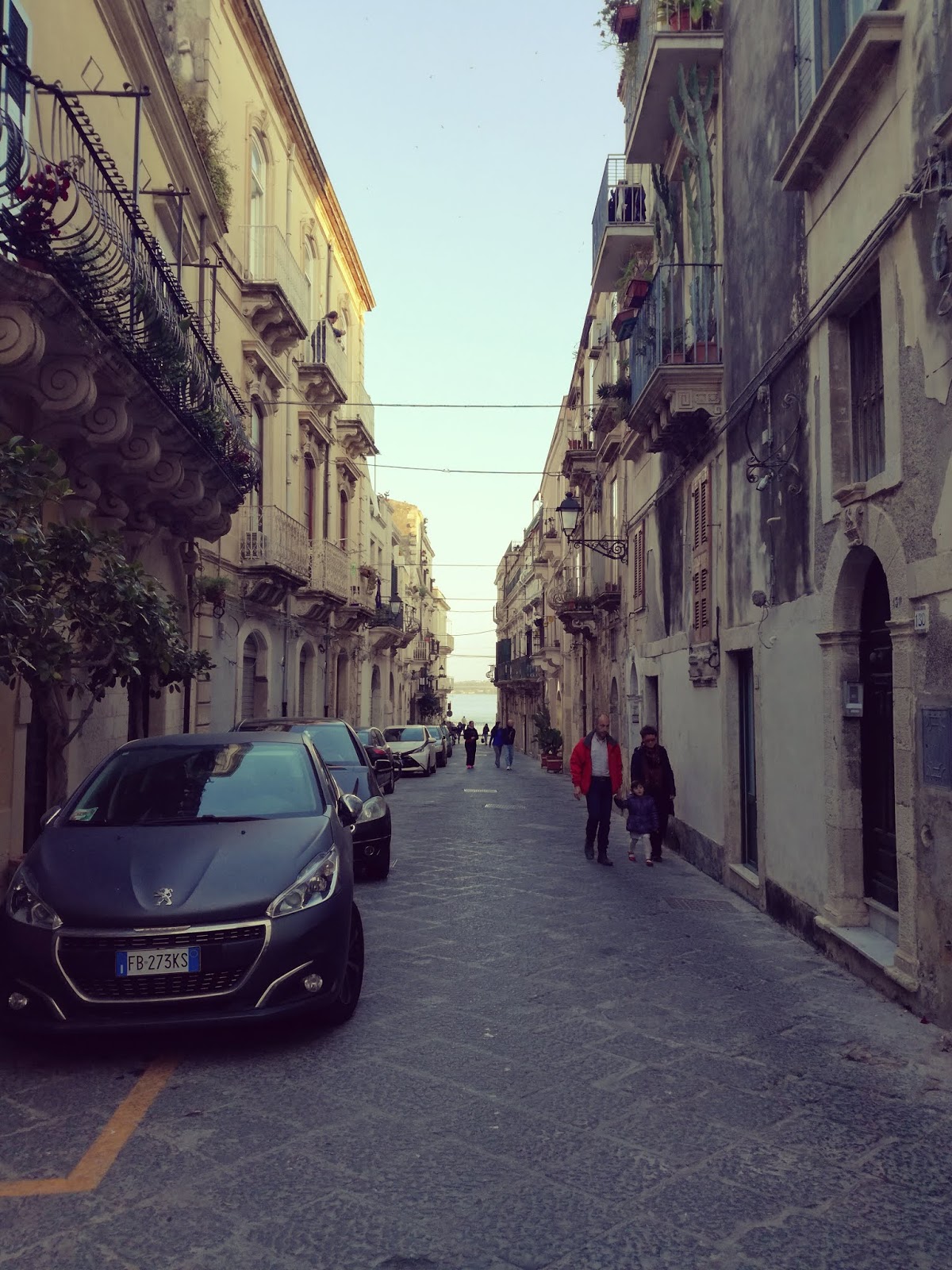
|
| Ortygia |
|
|
| Ortygia Sea View |
Taking another one of those streets, we found ourselves at Piazza Duomo, where, as the name suggests, stood a cathedral - Duomo di Siracusa. The cathedral is an ancient Catholic church. It was built on the site of an ancient temple (as many other churches in Sicily) - the temple of Athena. The piazza itself is the main square on Ortygia and is the symbol of the Baroque reconstruction following an earthquake in 1693.
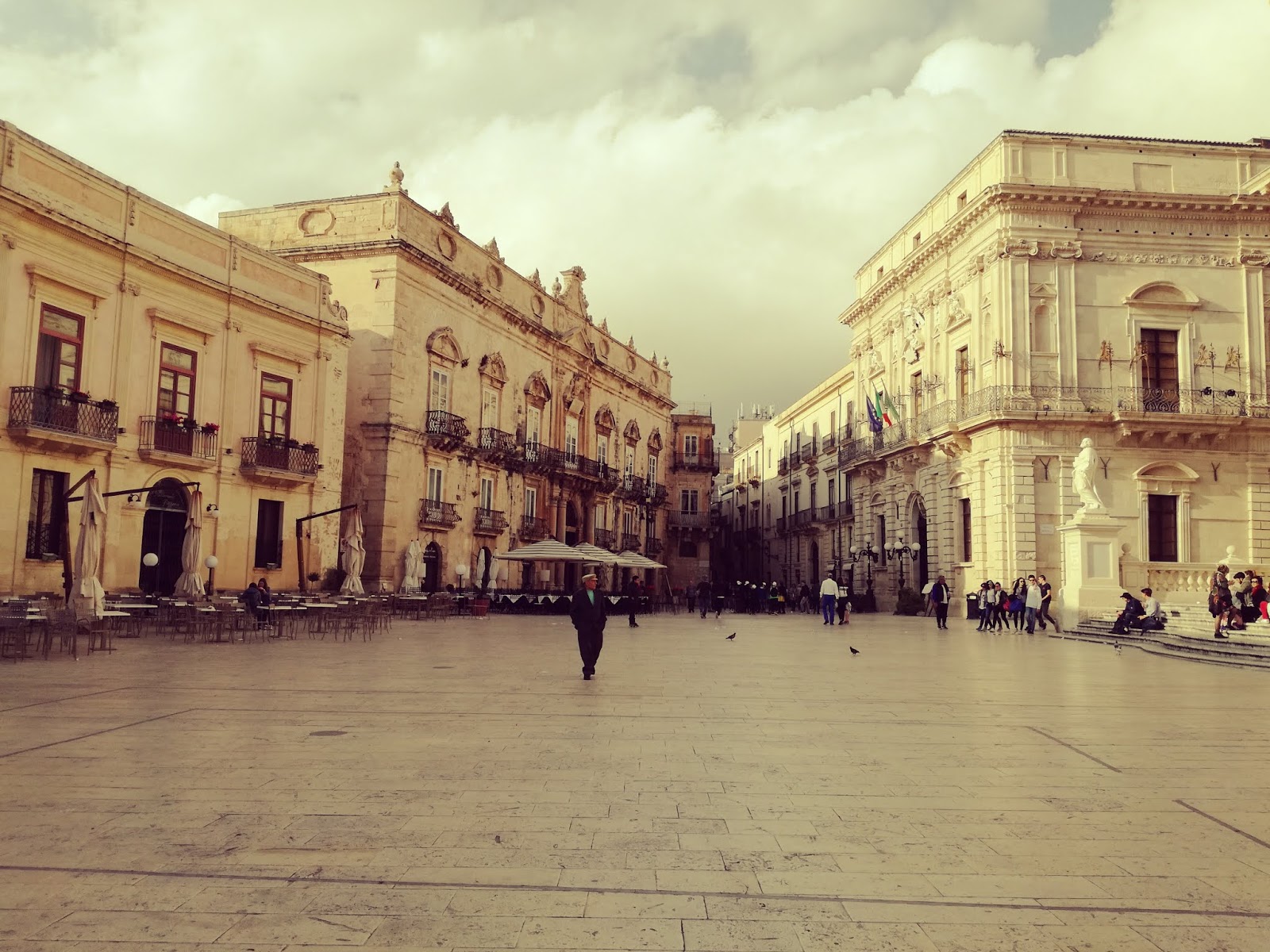
|
| Piazza Duomo (Siracusa) |
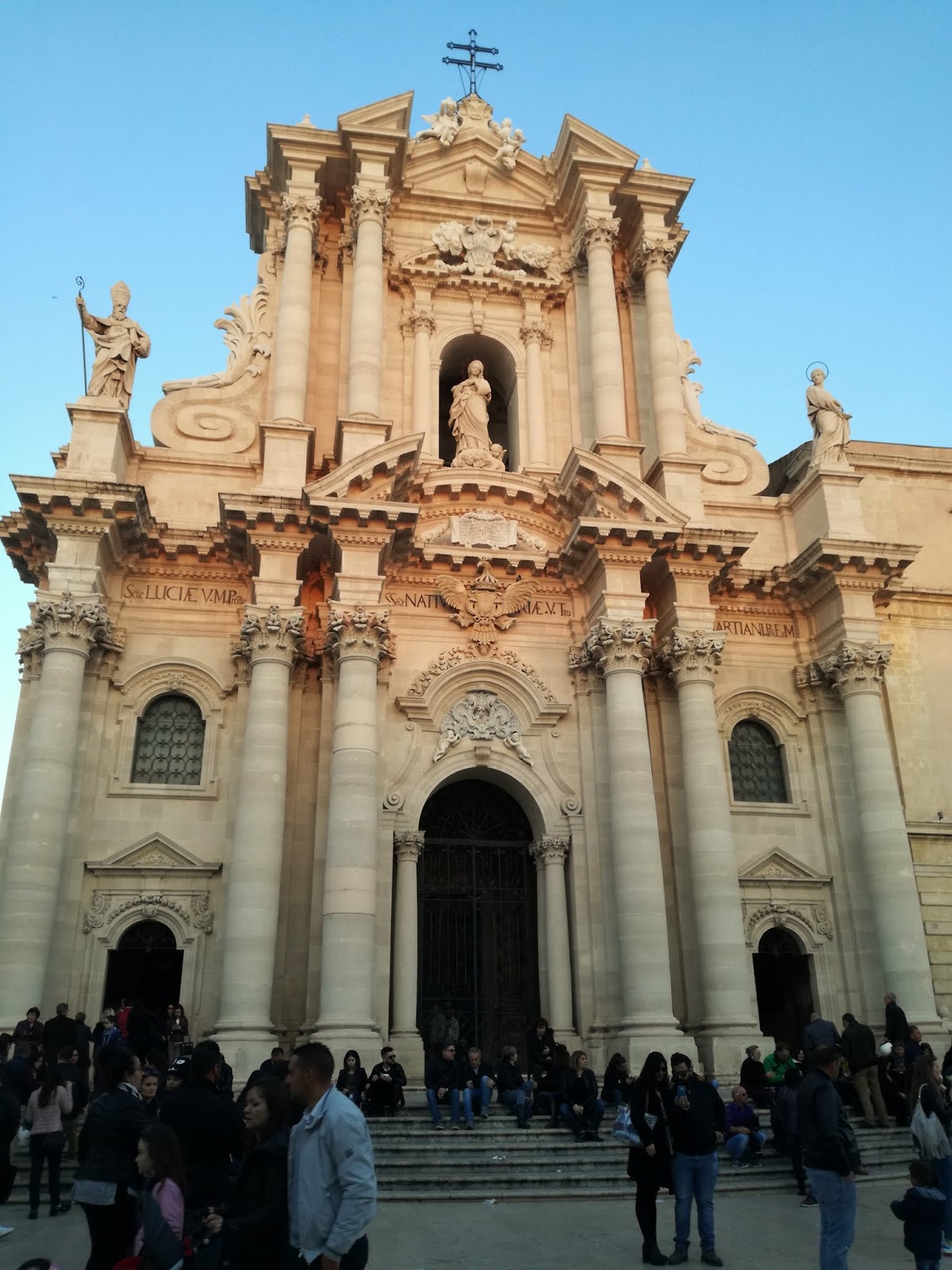
|
| Duomo di Siracusa |
On one side of it is the church of Saint Lucia, dedicated to the Patron Saint of Siracusa.
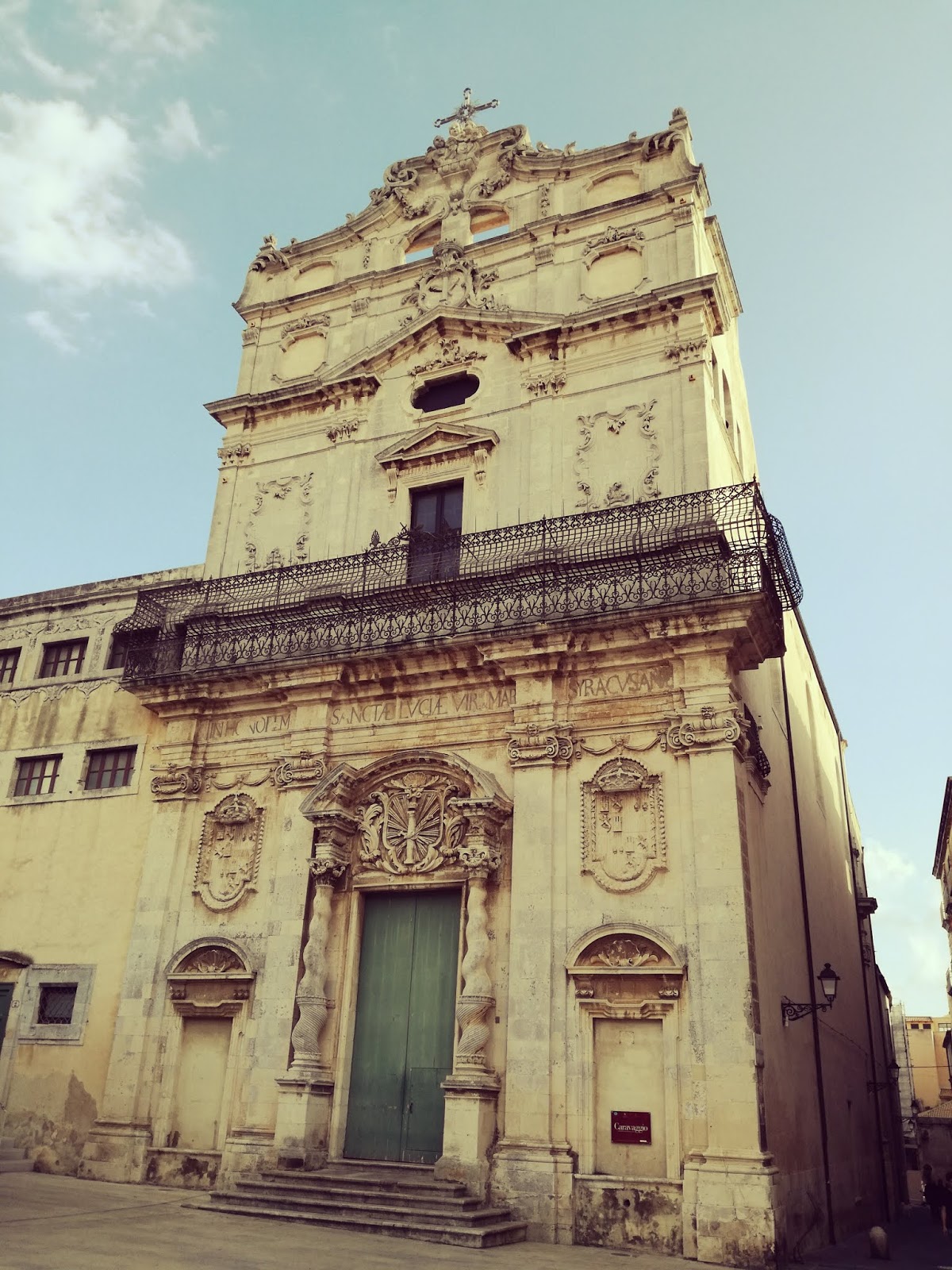
|
| Church of Saint Lucia |
As the sun started to set, we found more beautiful sea views and some restaurants in the far, offering that view. There were a lot of small parks and squares with benches where you could sit and enjoy.. for example this art of a tree.
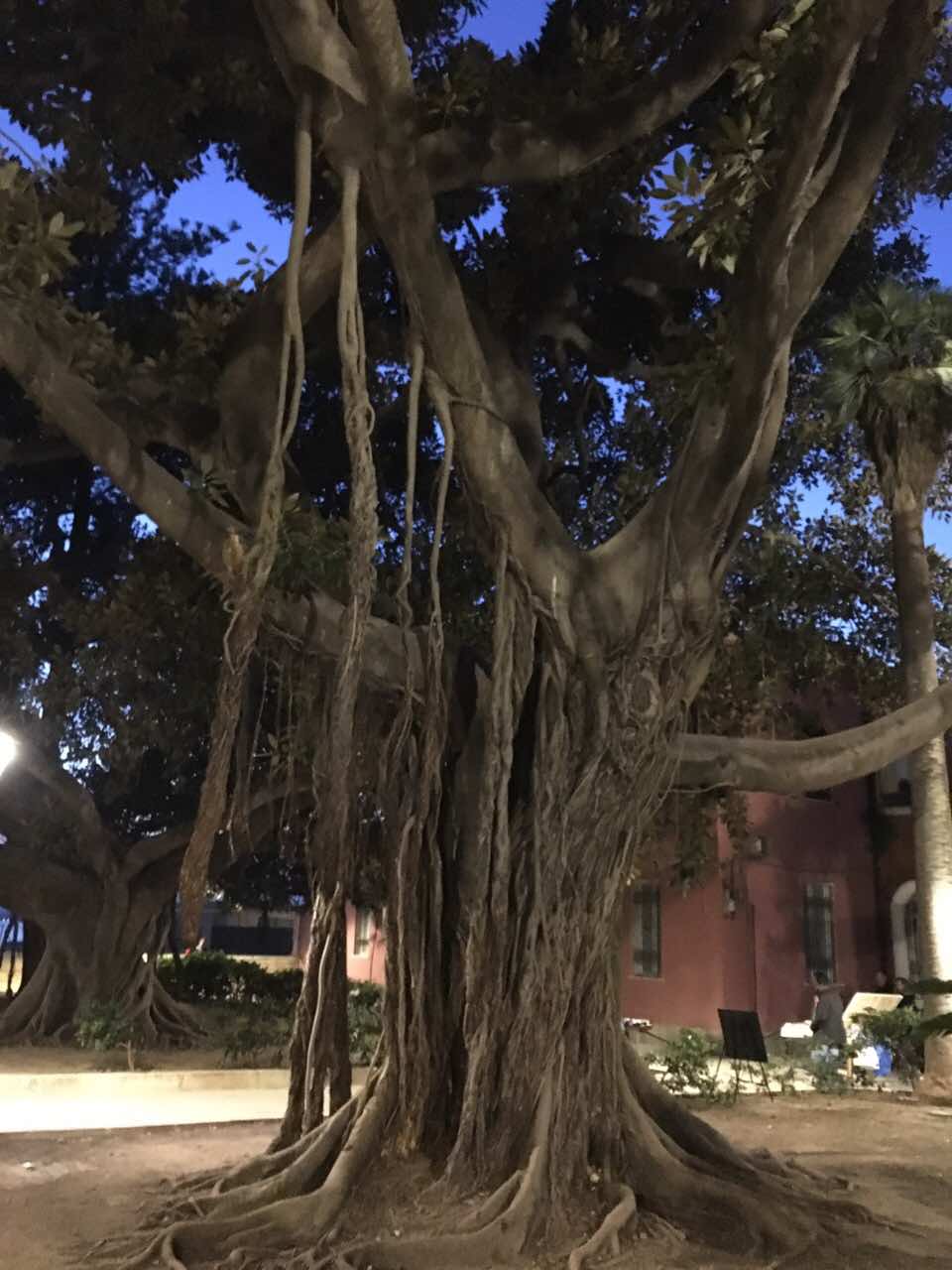
|
| Ortygia |
|
|
| Ortygia |
Those narrow streets looked even better in the evening. There was more to see on the island but we left that for the following day (a few rows down).
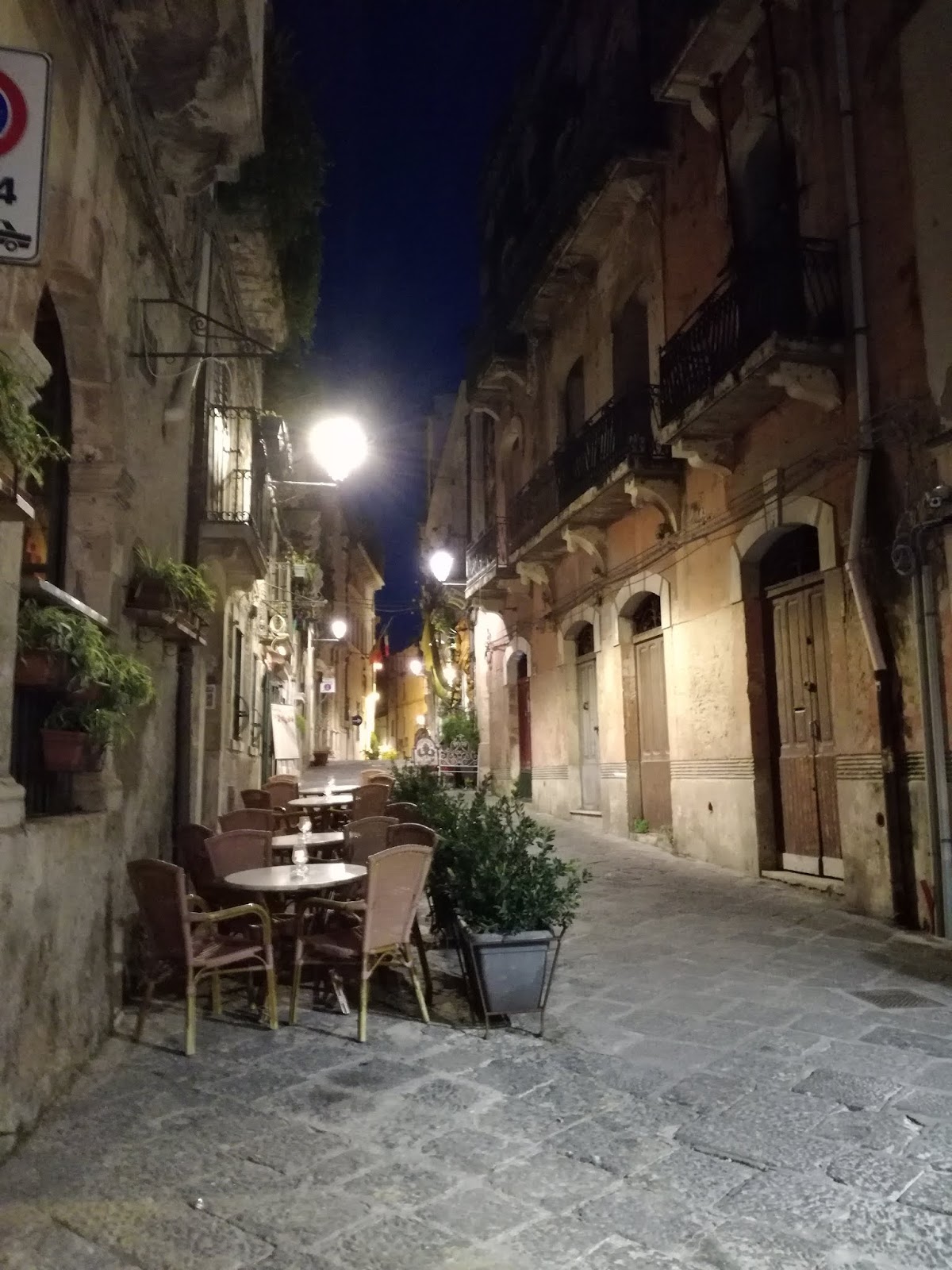
|
| Siracusa |
On the next day we headed to the archaeological park, lucked out with a free bus ride and noticed some orange trees in the middle of the boulevard, separating the lanes and later lemon trees in the park on our way to Orecchio di Dionisio a.k.a the Ear of Dionysius. It's a limestone cave carved out of the Temenites hill. It was dug in Greek/Roman times as a water storage for Syracuse. After an earthquake the cave became unusable for water storage. The name of the cave was given by the painter Caravaggio. It refers to the tyrant Dionysius I of Syracuse. On the inside it goes 65 meters back into the cliff and is 23 meters high. According to a legend, Dionysius used the cave as a prison for political dissidents and using the perfect acoustics eavesdropped on the plans and secrets of his captives.
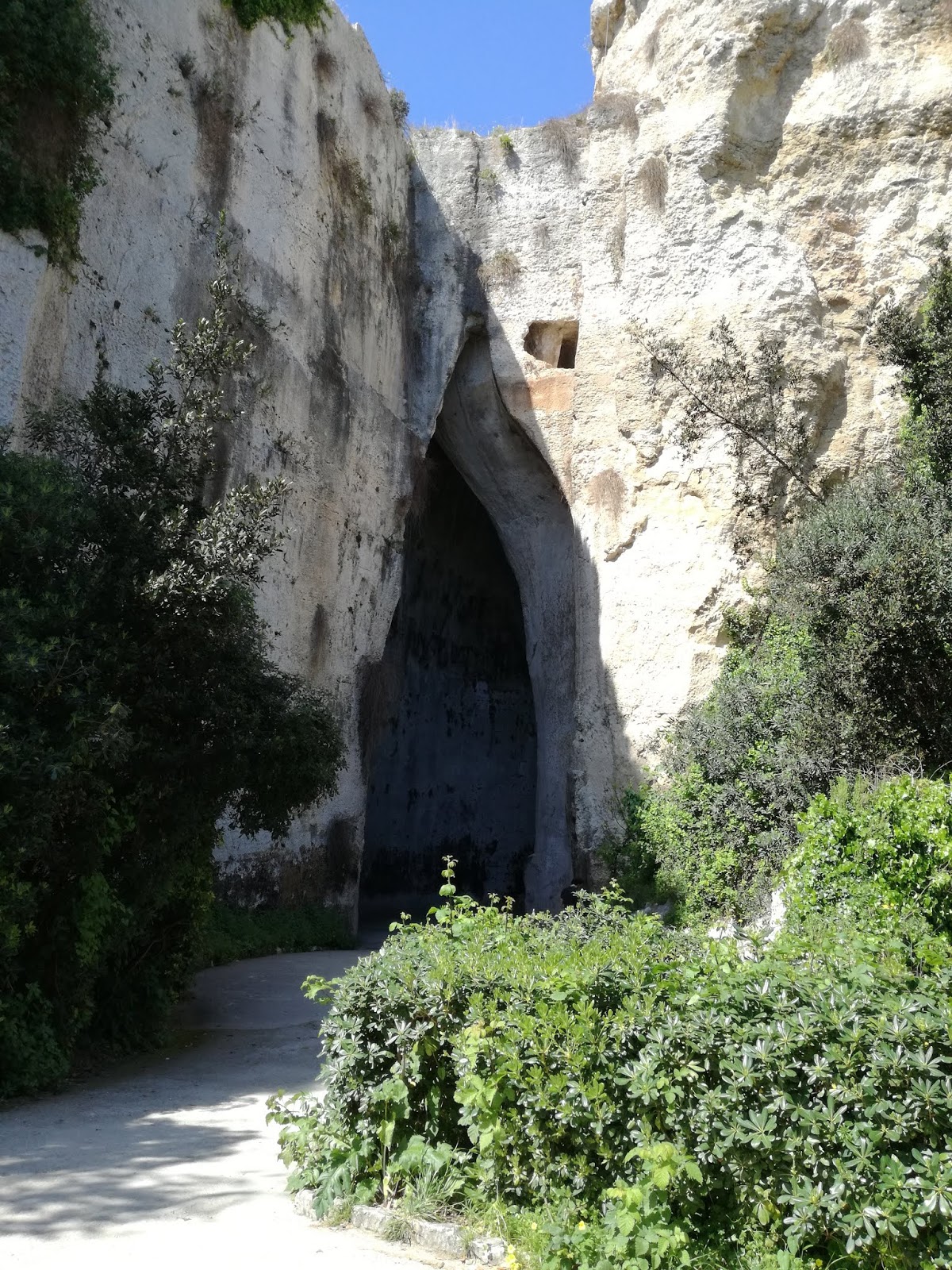
|
| Orecchio di Dionisio |
The park is divided into three main sections, one of which is the latomie (stone quarries) containing the Ear of Dionysius and many other rock formations. The second section of the park comprises of the Greek Theatre - also part of the UNESCO World Heritage Sites. It was first built in the 5th century BC, rebuilt in the 3rd century BC and renovated again in the Roman period. The seating arrangement (cavea) is one of the largest ever built by the ancient Greeks: 67 rows, divided into nine sections with eight aisles. No idea why but they were covering it with wooden benches. It could be to preserve it but it seemed like a loss.
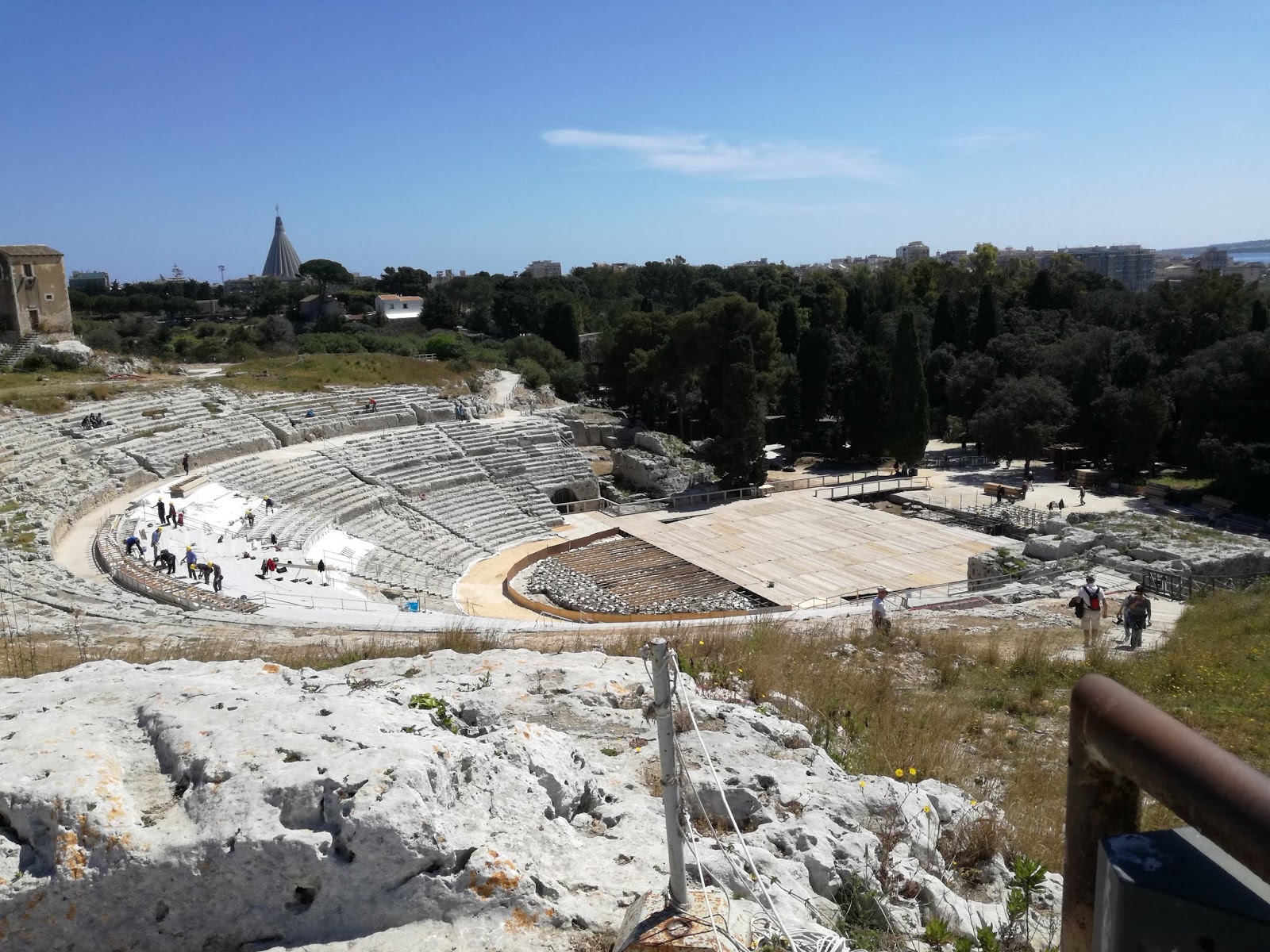
|
| Greek Theatre |
The third section of the park is the Roman amphitheater. It was used for gladiator fights. Nowadays, every now and then in the summer are held rock concerts. The amphitheater was partly carved out from the rock and is quite beautiful with all of its green.
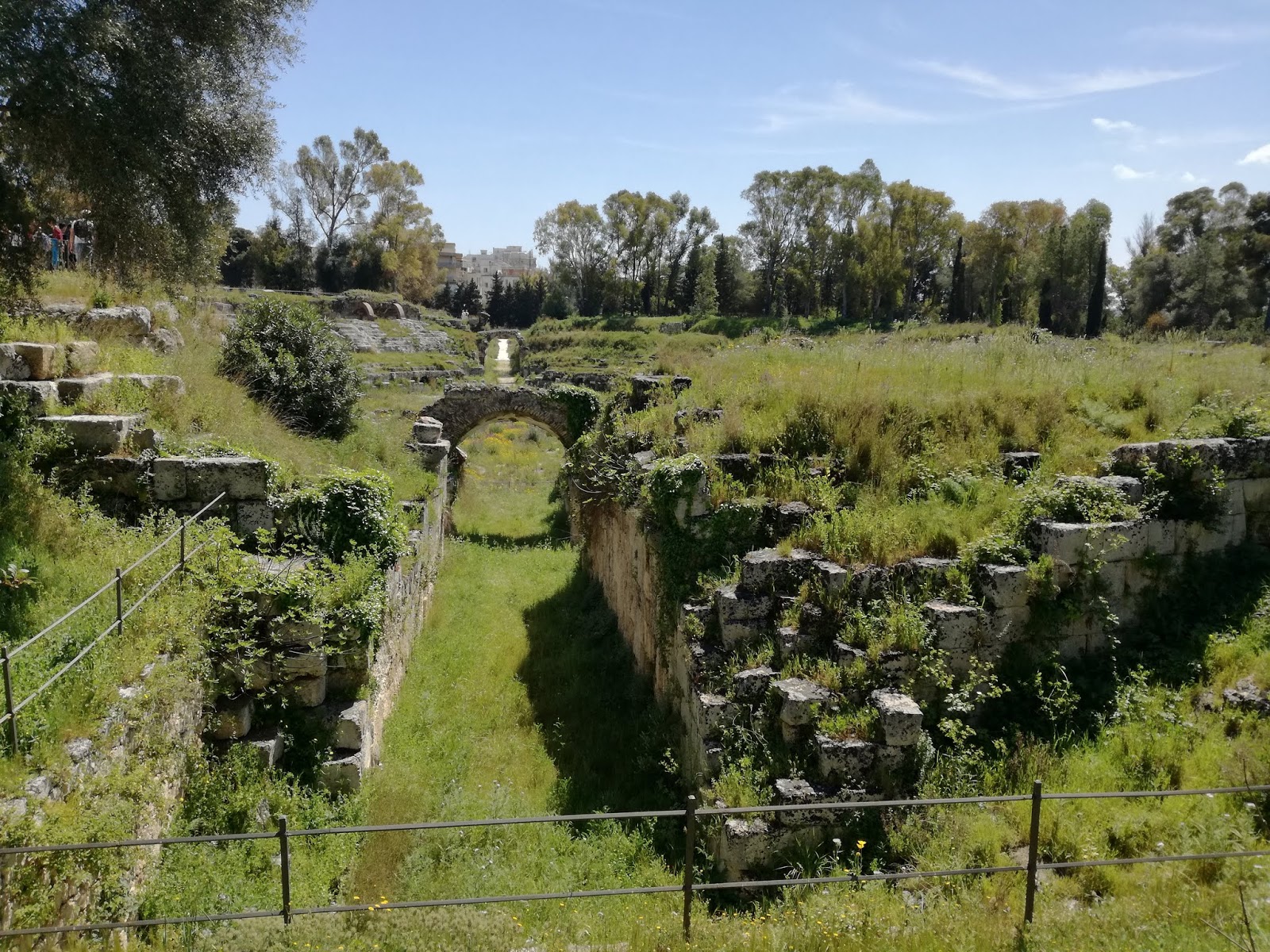
|
| Roman Amphitheater |
In the evening we went back to Ortygia, where our first stop was the Temple of Apollo. The temple is one of the most important ancient Greek monuments on Ortygia. It is the oldest known Doric temple in Western Europe. An inscription says that the temple honors Apollo, but after Cicero came to Syracuse, he wrote that the temple was dedicated to Artemis.
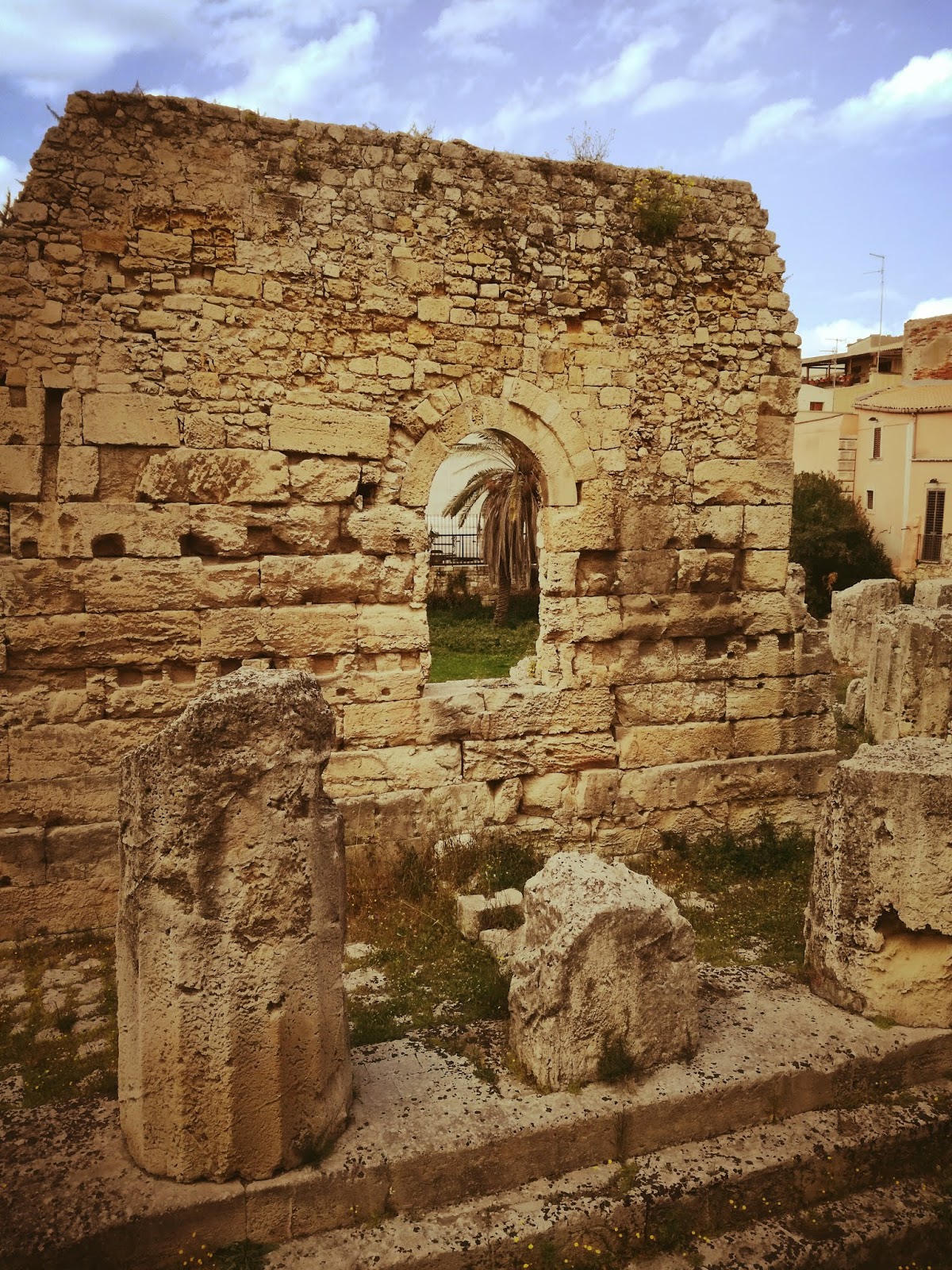
|
| Temple of Apollo |
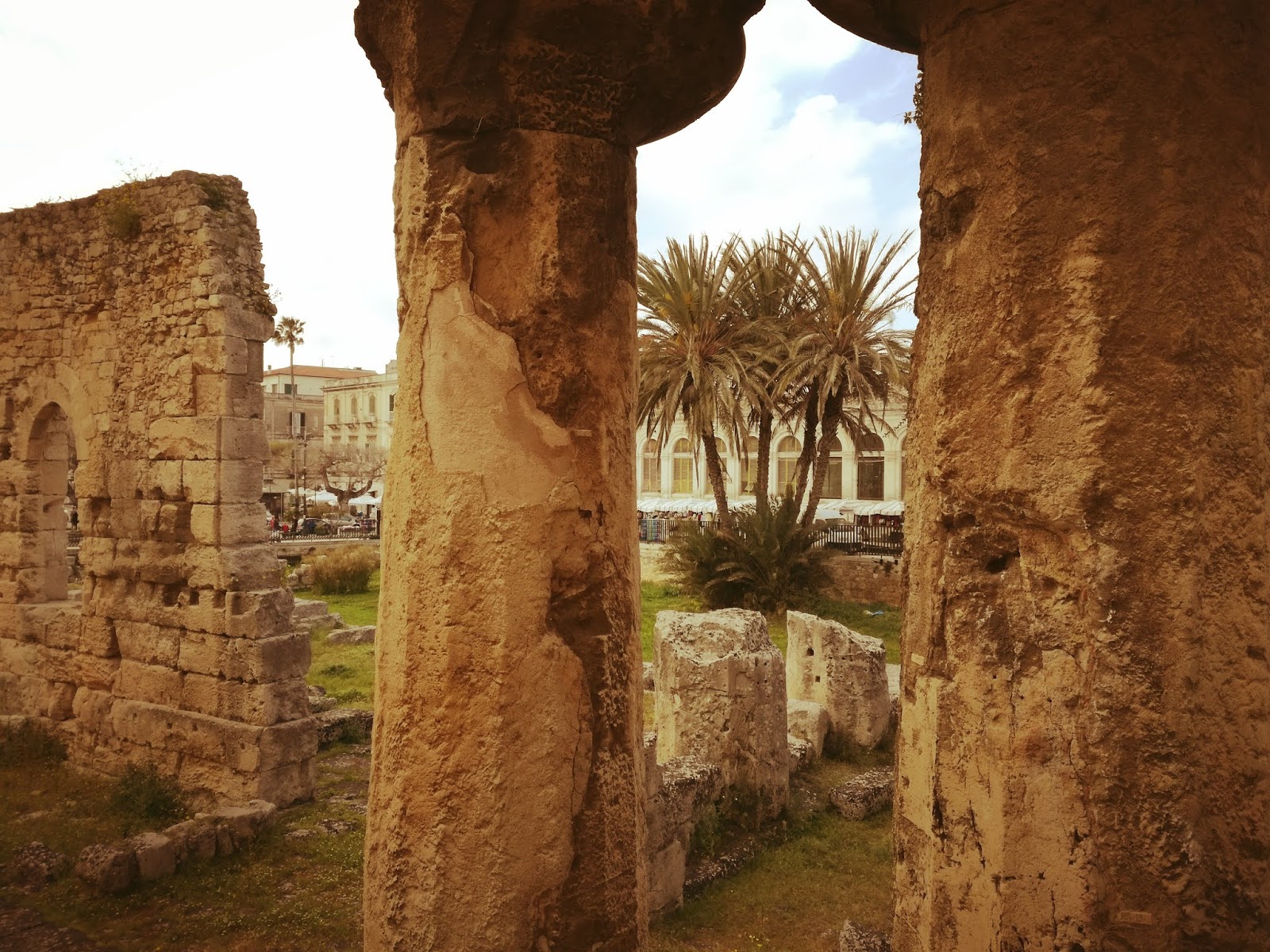
|
| Temple of Apollo |
We went on and as we were walking, we stumbled upon (a guy, who was peeing at that tree in the back but never mind) a map of the island. We nearly stepped on it - someone must have dropped it but as they say one man's trash is another man's treasure - it was very helpful. We took the waterside streets and enjoyed more of Ionian sea.
|
|
| Ortygia |
We even found some beautiful rocks a small beach! Of course I dipped my feet in the water! Did you even have to ask?
|
|
| Ortygia |
|
|
| Ortygia Little Beach |
Pretty, right? Let's see it from afar.
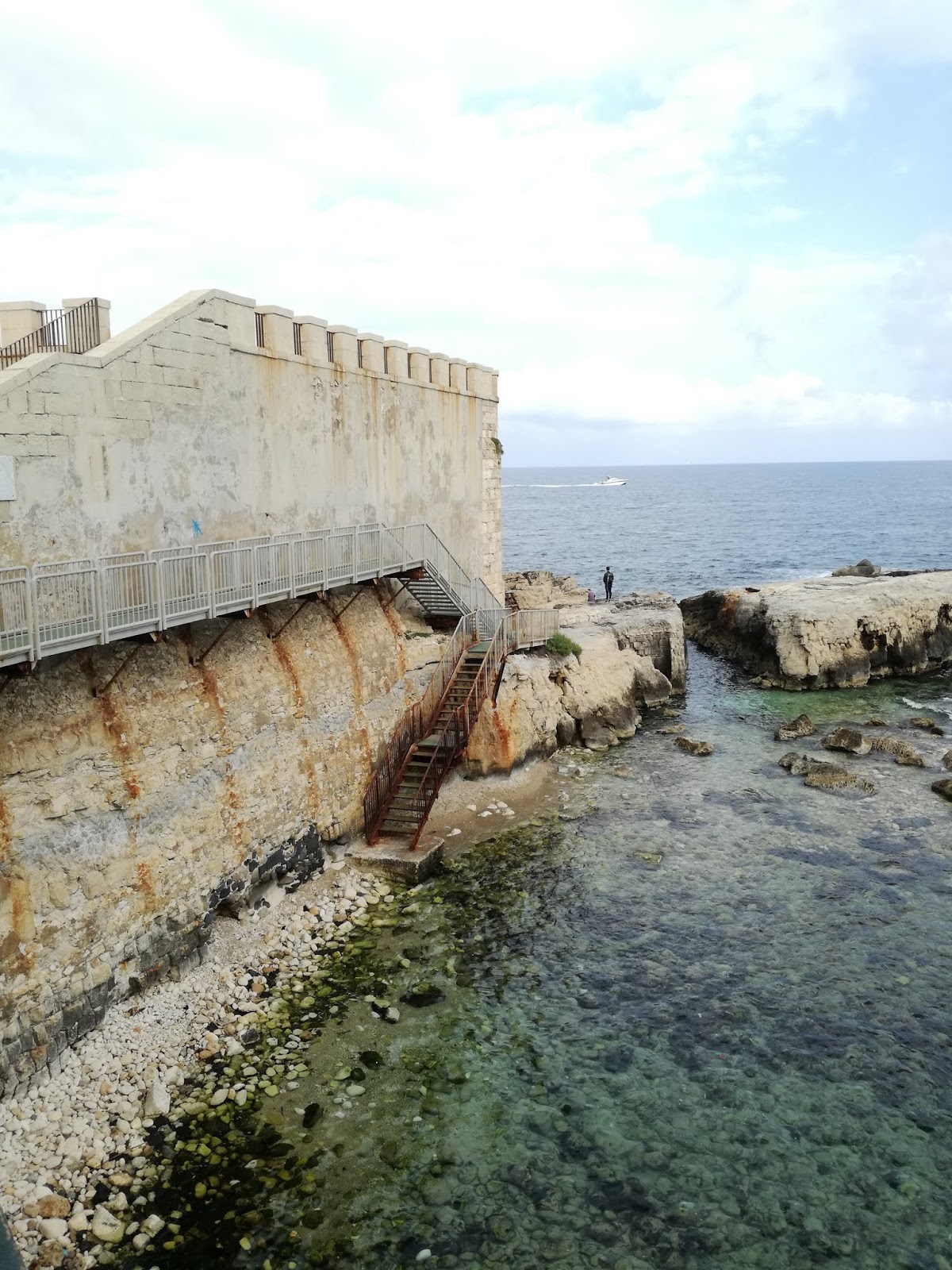
|
| Ortygia |

|
| Ortygia |
Yep, that's our beach! Right under the staircase.. told you it was little. There was another rocky place nearby where you could get in the water but the preferred beaches are a few kilometers away from the town - easily reachable by bus.
We grabbed a beer and french fries in a cone and passed by the Fountain of Arethusa (Fonte Aretusa). According to the Greek mythology, this is the place where the nymph Arethusa (the patron figure of ancient Syracuse) returned to earth's surface after escaping from her undersea home in Arcadia.

|
| Fountain of Arethusa (Fonte Aretusa) |
On our way home, we stopped for some Italian cappuccino made with love. A park near Pantheon Church of St. Thomas seemed like a nice place to have our coffees.
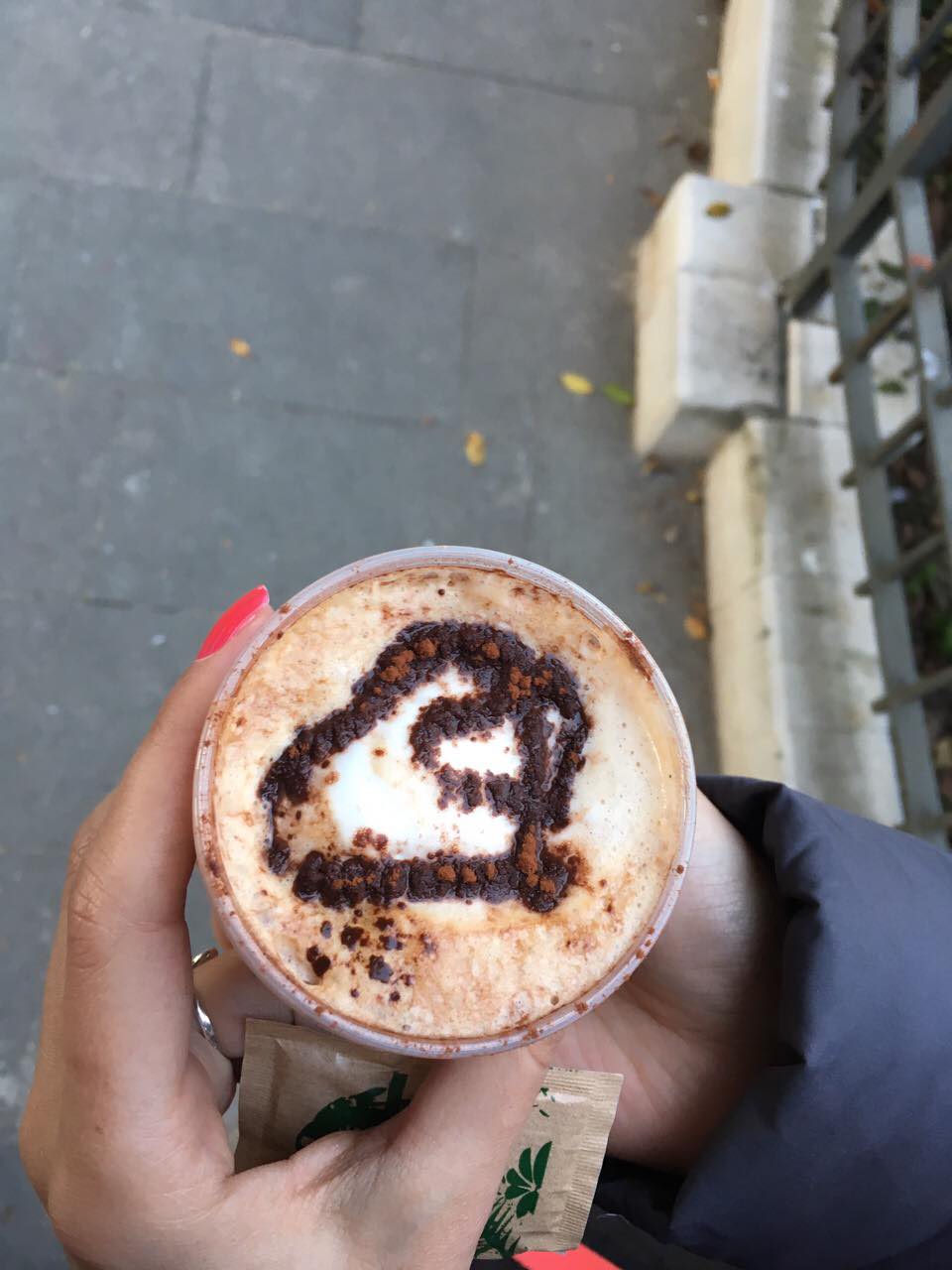
|
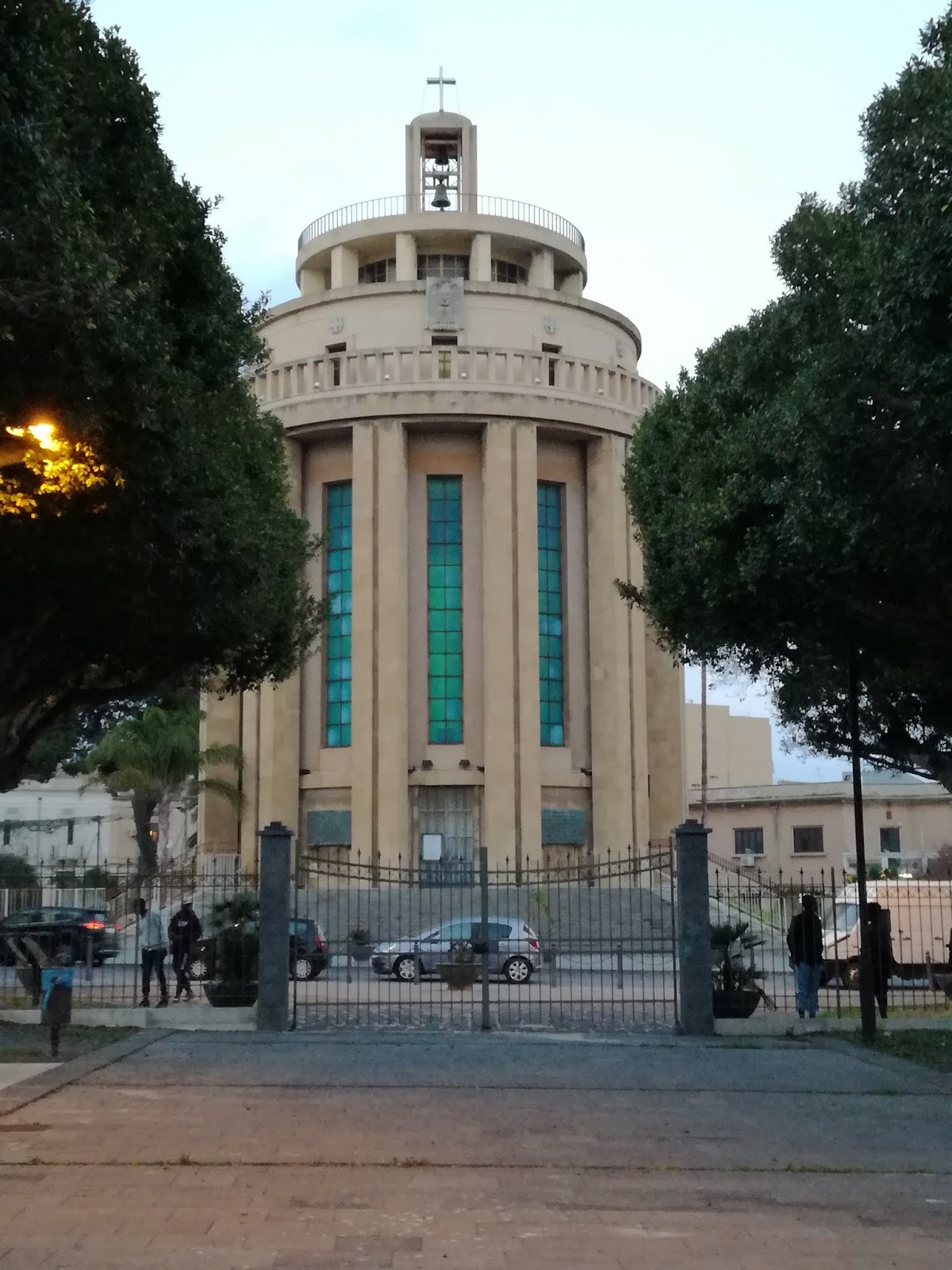
|
| Pantheon Church of St. Thomas |
Day 3 - we are going to Noto!
Noto is a small town an hour by bus away from Siracusa. On our way there, we were a bit anxious about how we were going to get back to Siracusa but then once we got off the bus, a man just came to us out of nowhere and started talking to us in Italian explaining when and where we had to go in order to take the bus back. Weirdly lucky again. He also pointed us to the gate of the city - Porta Reale Ferdinandea. The Royal gate marks the start of the town. The triumphal arch was built during a visit to Noto of Ferdinand II of Bourbon.

|
| Porta Reale Ferdinandea |
Walking down the Corso (Corso Vittorio Emanuele) we passed by the San Francesco all’ Immacolata Church.
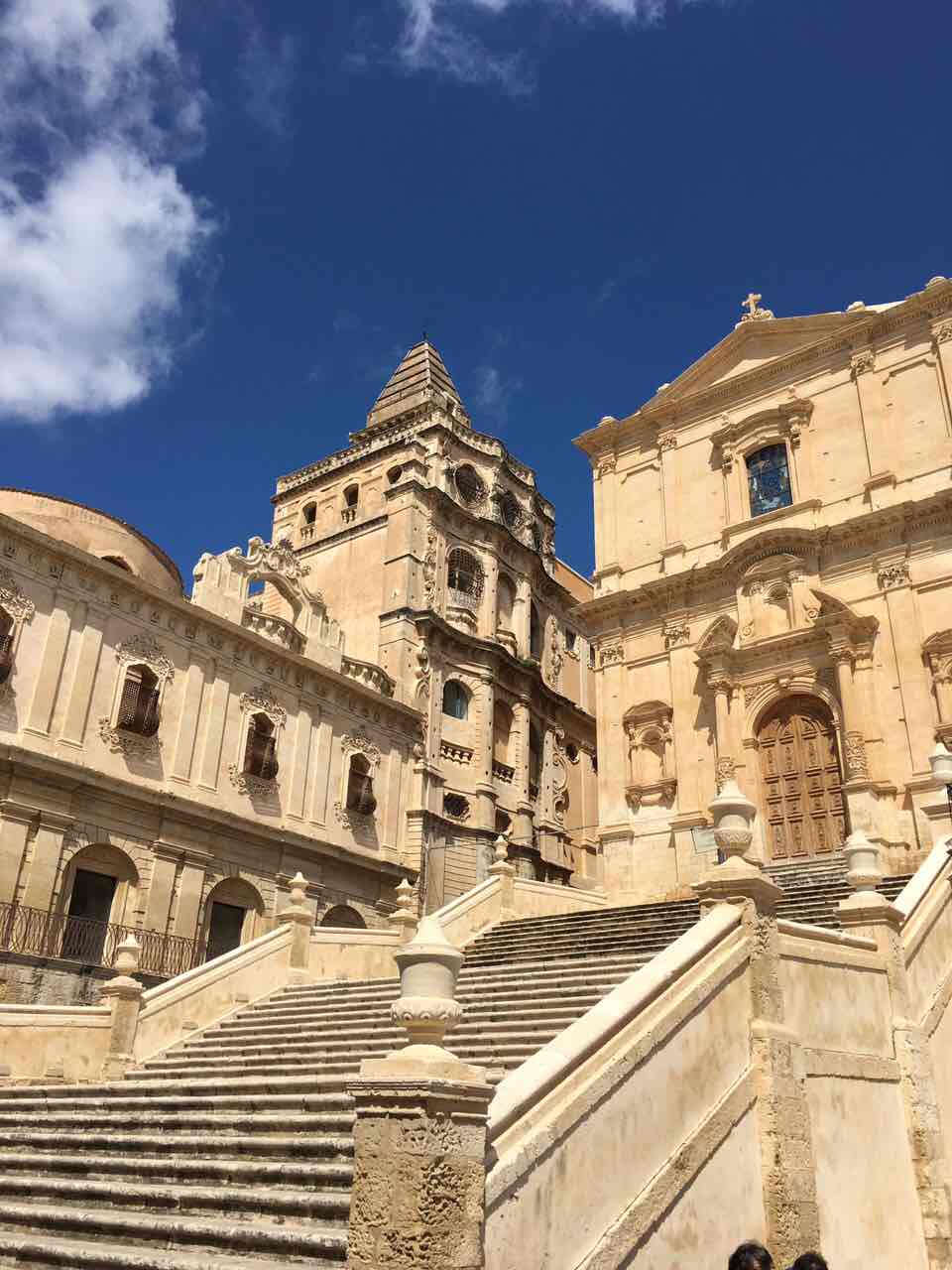
|
| San Francesco all’ Immacolata Church |
We soon reached the Duomo (every town seems to have one). It's construction began in the early 18th century and was completed in 1776. The whole town was rebuilt after being destroyed in an earthquake. The town got a new location and a new baroque look, which made it worth being declared a UNESCO World Heritage Site. Another earthquake made the cathedral dome to collapse in 1996. It has since been rebuilt, and was reopened in 2007. The cathedral is dedicated to Saint Nicholas of Myra, and has been the cathedral of the Diocese of Noto since the diocese's establishment in 1844.
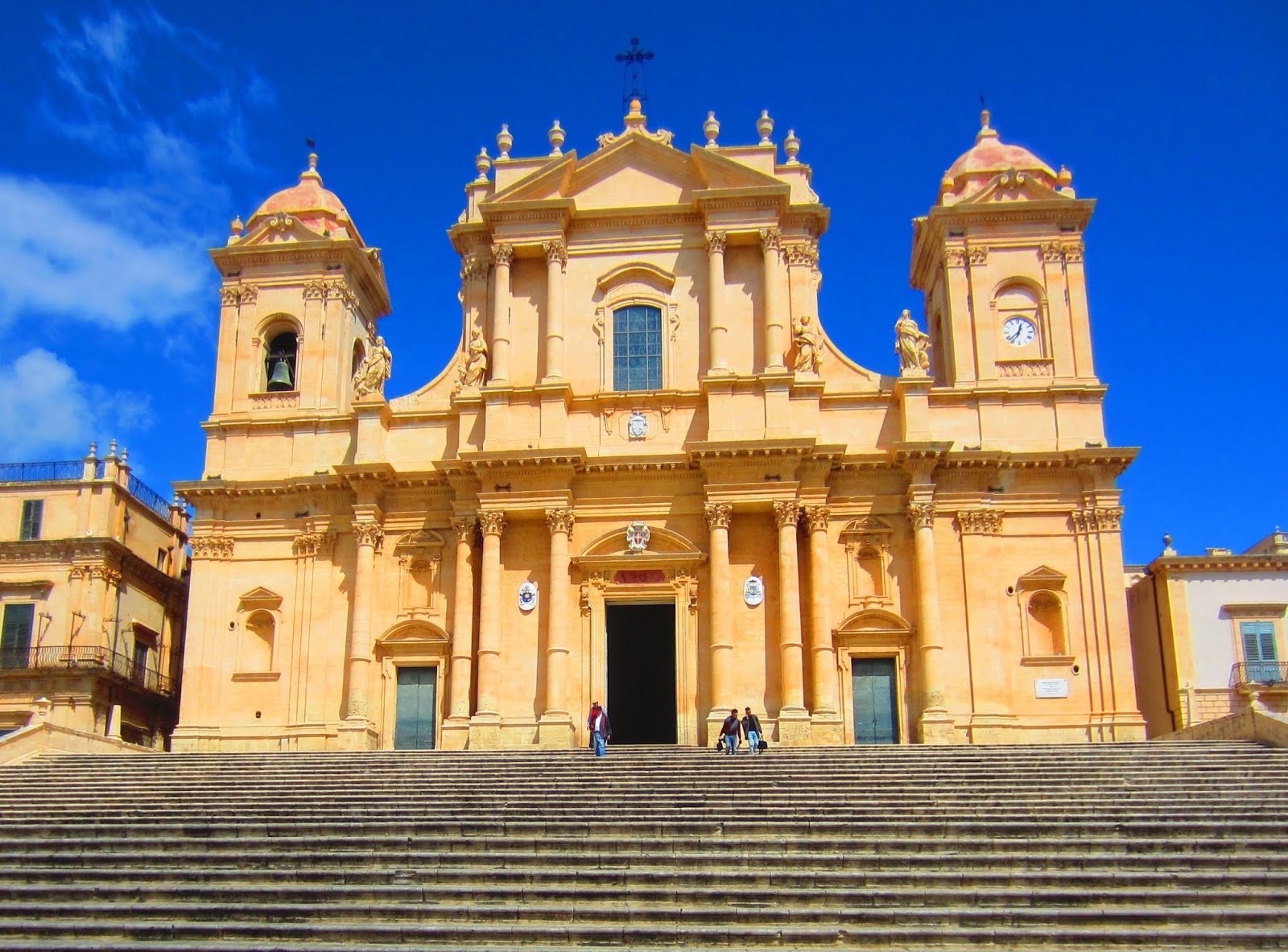
|
| Noto Cathedral (Duomo) |
Opposite the cathedral lies Palazzo Ducezio, which houses the Town Hall.

|
| Palazzo Ducezio |
Down the Corso is yet another church - San Domenico Church. Noto is quite rich on churches.
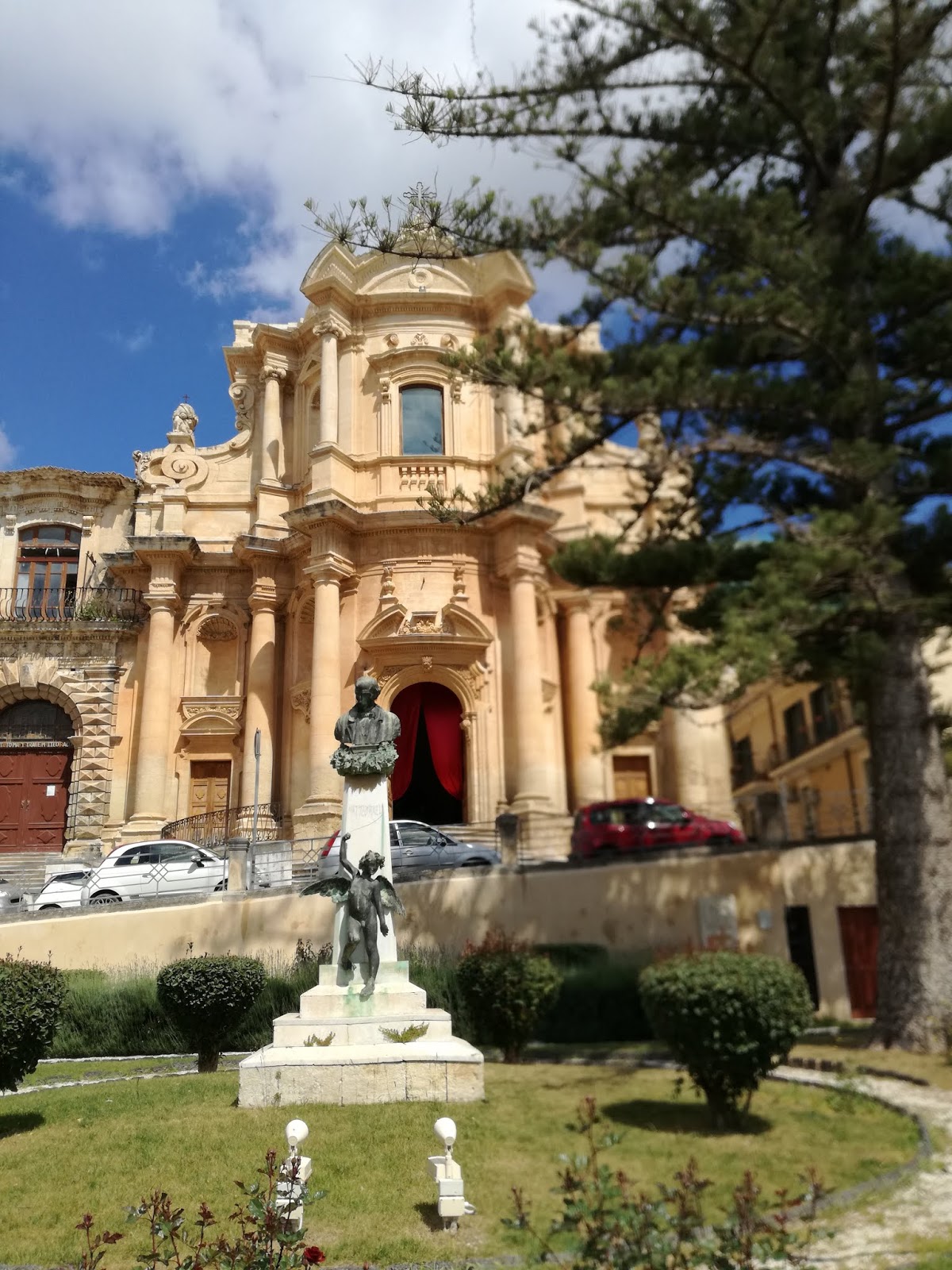
|
| San Domenico Church |
There's also a theater! - Teatro Comunale Vittorio Emanuele.
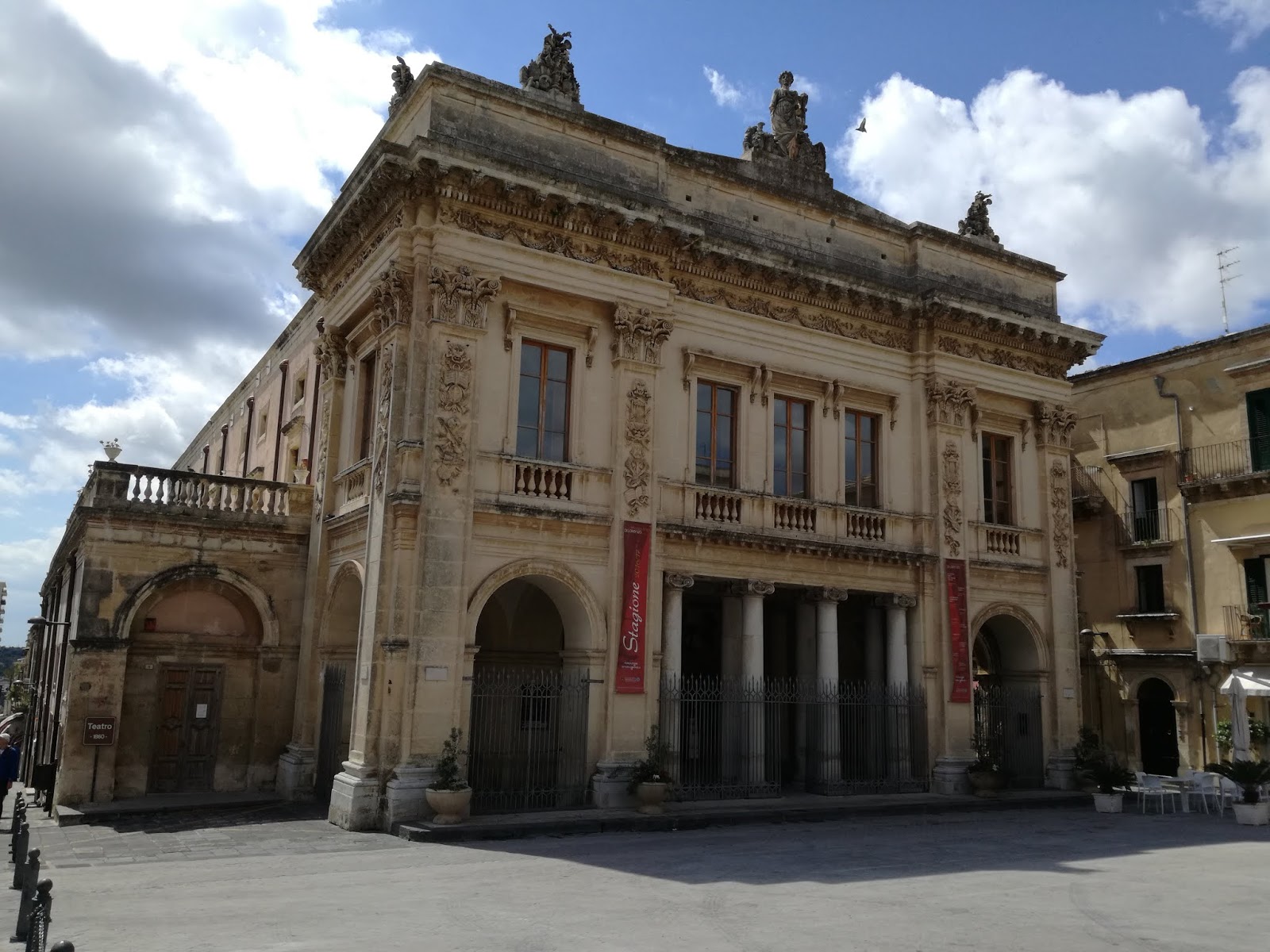
|
| Teatro Comunale Vittorio Emanuele |
Every May, there is a flower festival in Noto, during which via Nicolaci is covered by flowers all the way up to a church at the end of it. The flowers are placed in a composition, creating beautiful pictures. Just imagine it.
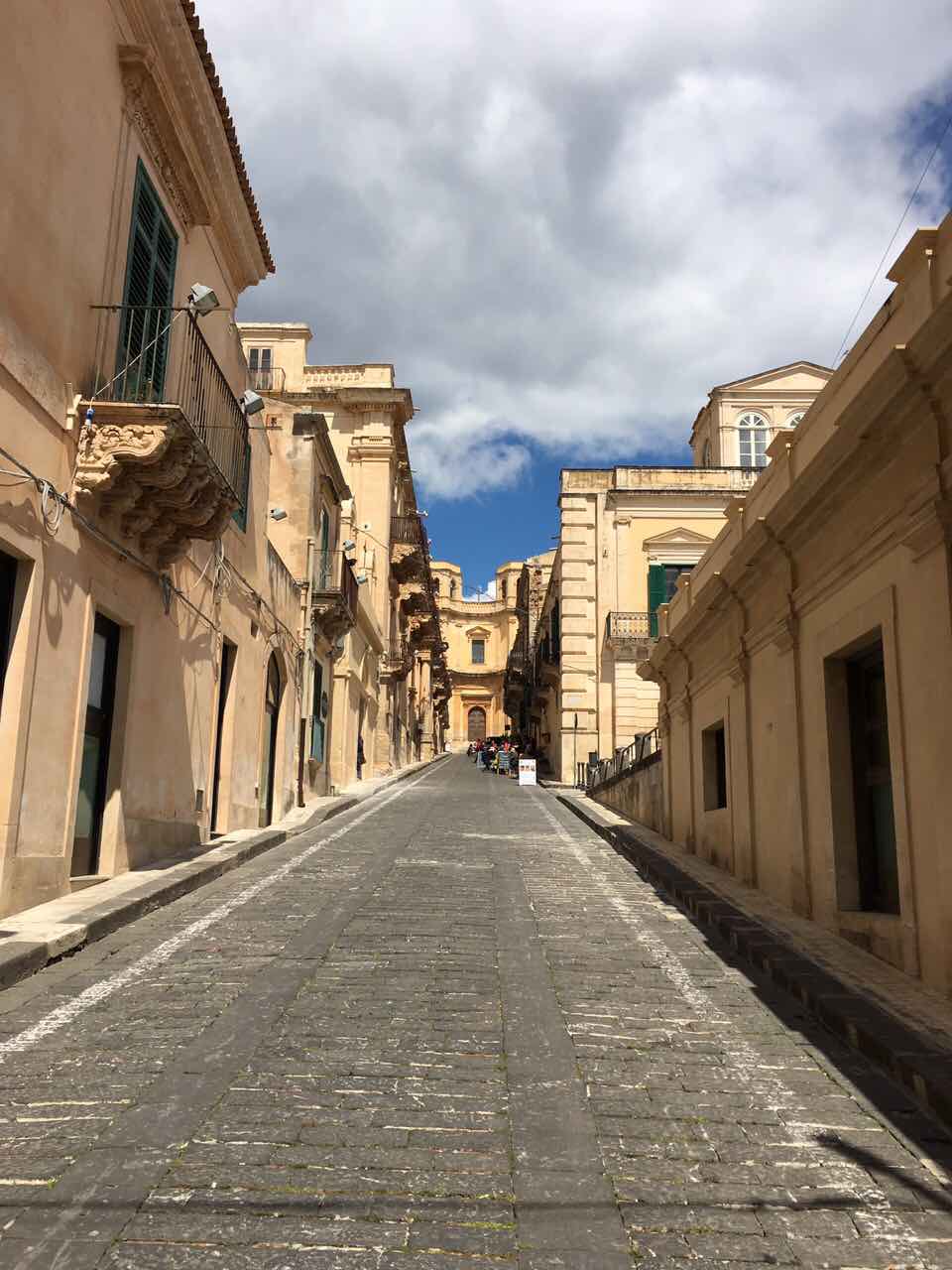
|
| Via Nicolaci |
That church at the end of via Nicolaci is the Montevergine Church. Its towers are supposed to have a beautiful vast view of the whole town. Unfortunately, it was closed when we were there.

|
| Montevergine Church |
Back in Siracusa, we couldn't skip the dessert. And trust me, this was goooood! (Calimero with ice cream, krokan and whatever delisiousness the ice cream guy included.. yammi!)

|
| Calimero Dessert |
On one side of Ortygia, there was a great spot where one could sit by the sea and have a homemade lemonade.. with salt, which they said was a typical Siracusian drink. Piece of advice - do not try it!
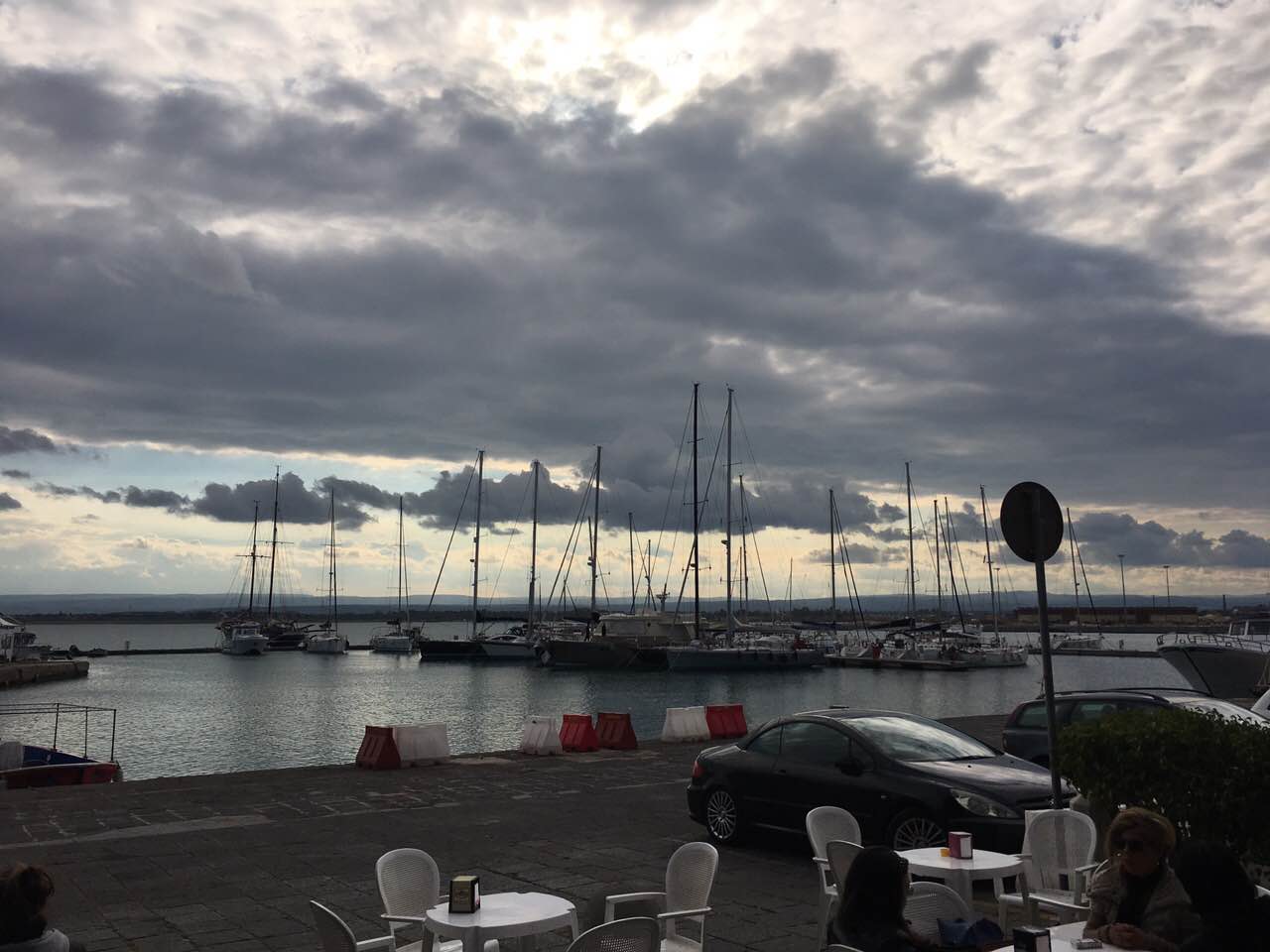
|
| Ortygia |
We wanted to wait for the sunset, but the clouds thought they'd keep it to themselves so plan B.. explore the camera effects. Since it threatened to start raining, plan B turned into plan C - an Irish pub nearby. It actually wasn't very easy to find a place like that that worked in the evening (at least in March). Most were cafes with gelato and sweets and tiny pizza or fish restaurants. So this one was a win. It even had a darts machine.
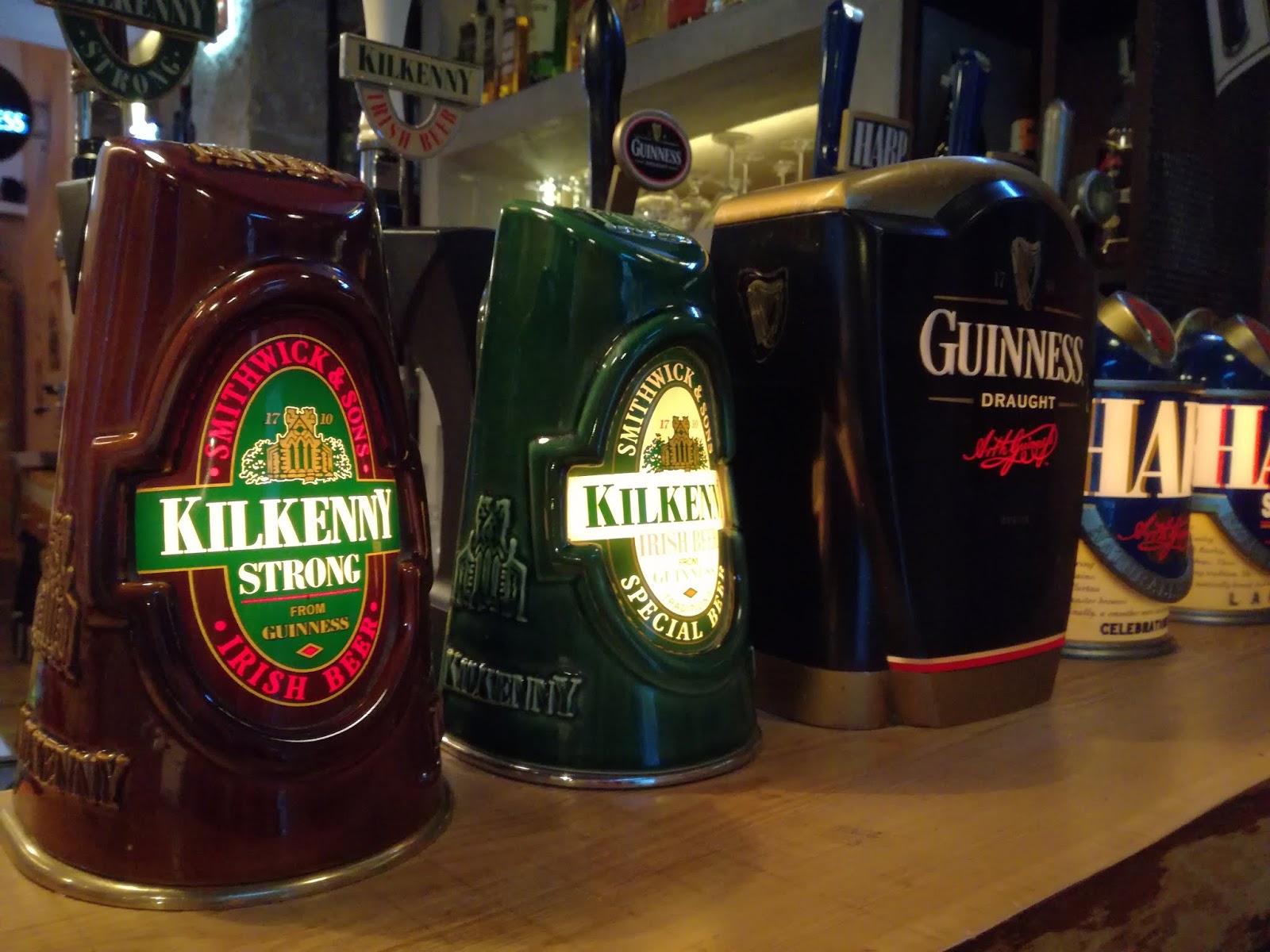
|
| Irish pub in Ortygia |
After plan C, we went back to the apartment and continued with wine + lemonade cocktails - a newly found fave for me. Speaking of the apartment, it was a really nice place. Remember I mentioned Marco? He was the owner and was so friendly and welcoming. He waited for us at the bus station when we arrived and took us for a coffee before showing us to the apartment. He gave us tips on where to go and had even made his own guide to the city, containing places to visit and even his favorite restaurants and bakeries. He also left some treats for us, including a bottle of wine. Great guy! (We found him on airbnb.)

|
| Marco's Apartment |
On our last day, we headed back to Catania (where the airport was). But before that, I had yet another surprising drink. After the lemonade with salt, I started the day with a.. coffee with salt. We mistook the salt jar for the sugar one. Again - do not try that!
Anyway, on the way we spotted Mount Etna, under heavy clouds, probably a result of its recent eruption. Mount Etna is an active volcano, the highest in Europe and a part of the UNESCO World Heritage Sites.
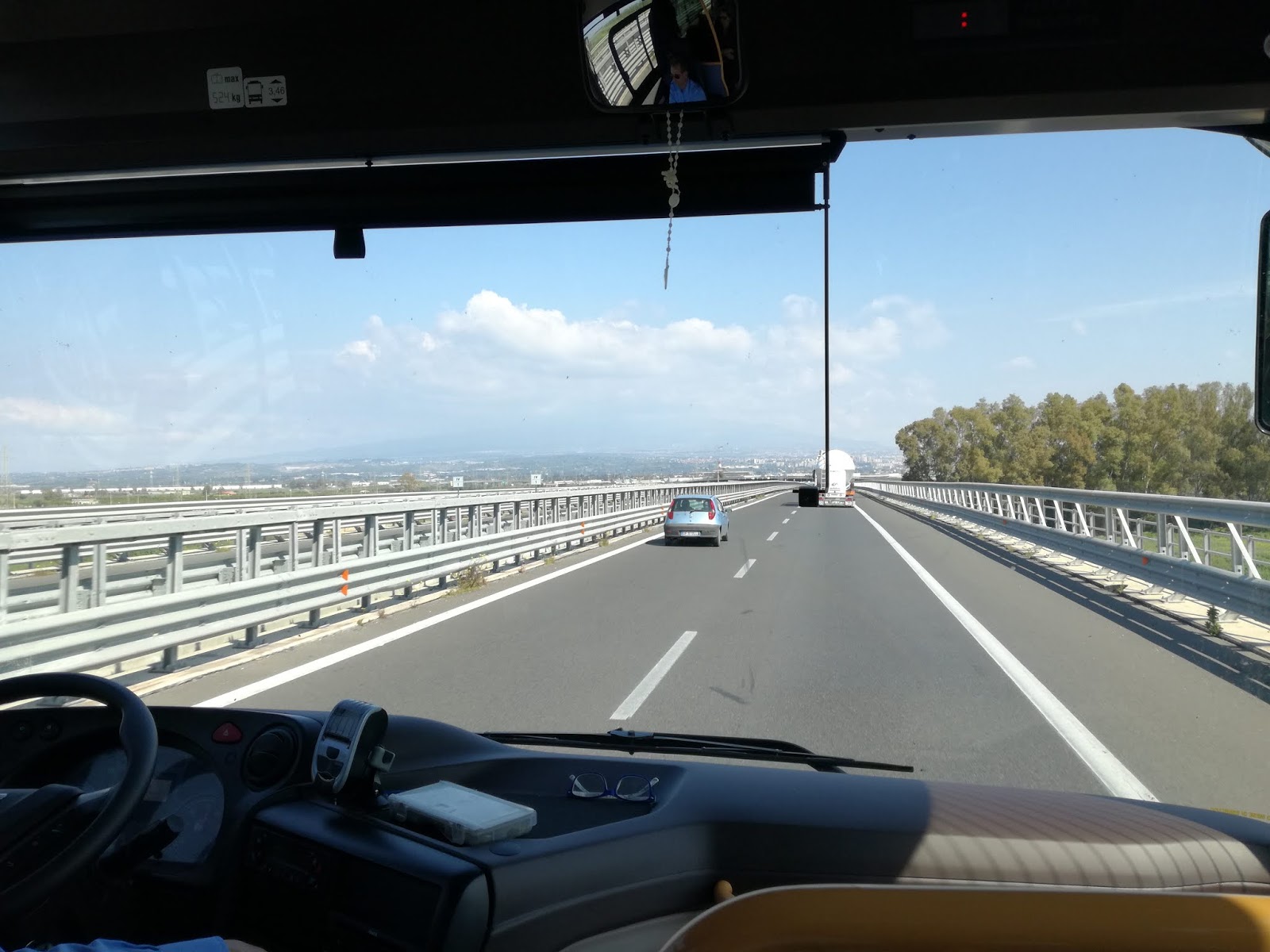
|
| Mount Etna |
We had some time for a quick walk around Catania before our flight. We took a shuttle bus from the airport and got off at via Etnea - it's a really long street that supposedly has some views to the volcano on one side and a Duomo on the other. Surprised? Naturally we headed for the Duomo's square. The Duomo is a Roman Catholic cathedral. It's the seat of the Archbishops of Catania. It has been destroyed and rebuilt several times because of earthquakes and eruptions of the nearby Mount Etna.

|
| Duomo Catania |
We grabbed one quick ice-cream (the Italian gelato is the best!) and headed back home, impatient for the next trip to come.